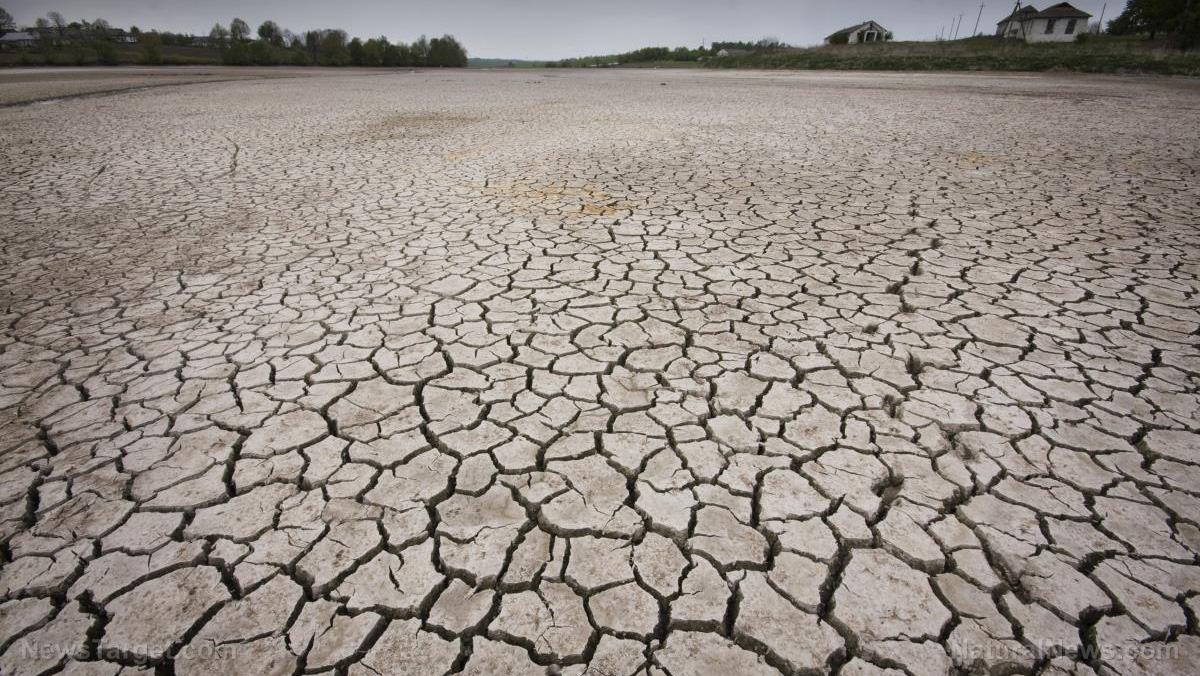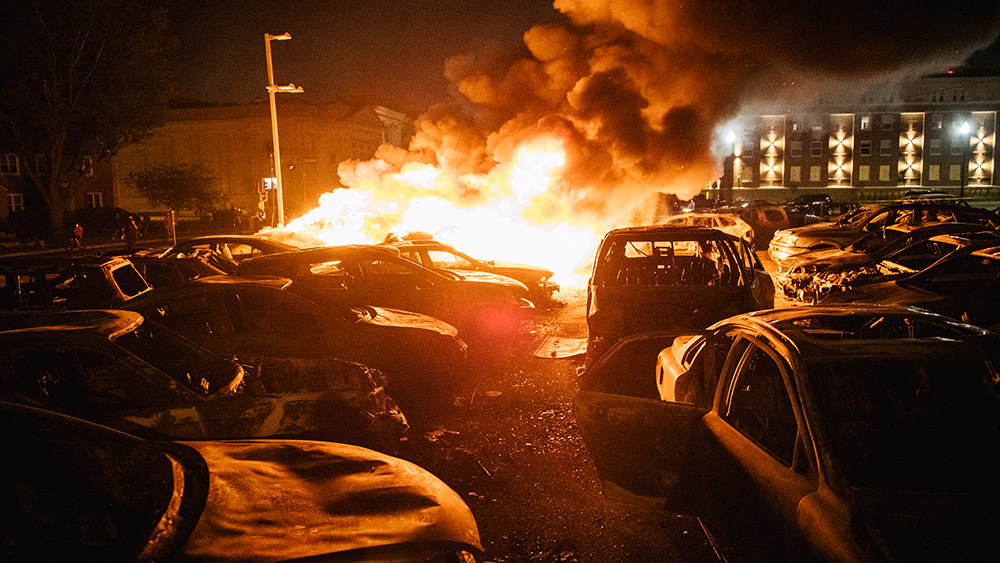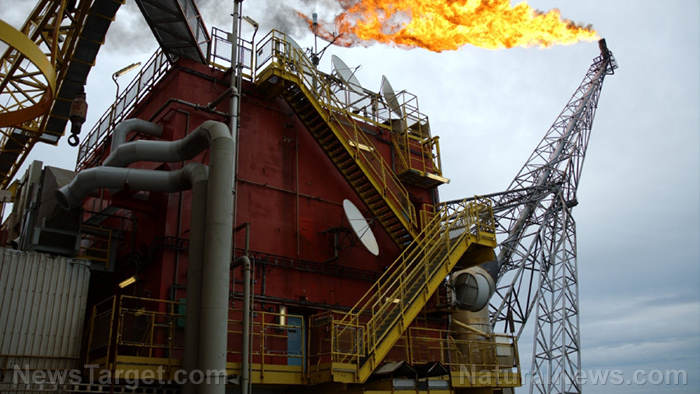From Stroessner to Syngenta: Paraguay’s soy conflicts
07/30/2021 / By News Editors

The ‘soybeanisation’ of the Paraguayan economy has had a devastating impact on the country’s ecology, rural populations and democratic process, but it has been lucrative for foreign corporations and the domestic oligarchy.
(Article by Owen Schalk republished from Alborada.net)
In 2003, the agrichemical behemoth Syngenta published a controversial advertisement in Argentinian newspapers. It showed a map of South America with a large portion of the Southern Cone – Bolivia, Paraguay, Argentina and Brazil – highlighted in green and labelled the ‘United Republic of Soybeans.’ The ad was criticised as an expression of neocolonial avarice directed at one of the region’s most profitable exports. Echoes of the 20th century’s ‘banana republics,’ maldeveloped export economies governed by brutal puppets of US corporations, were obvious: either Syngenta did not notice the historical correlation or, more likely, deliberately stoked the legacies of foreign meddling in the region.
The implications of the ad were obvious: for multinational agribusiness, the people of Latin America do not matter, nor do fair labour practices or the sanctity of democratically-elected governments. These companies only see profit, and they are more than willing to reorganise the region at will to enrich themselves. Agribusiness concerns such as Syngenta, Monsanto, and Bayer have insinuated themselves with governments throughout the region, which have then facilitated the dispossession of rural campesinos – expelling them from their homes, deforesting their lands, murdering them if they become too rebellious – so that the land can be purchased by their corporate friends.

In the words of Joel E. Correia, ‘soy is a central node in networks of social, political-economic, scientific and ecological relations literally rooted in, reshaping and reterritorializing many states in South America..’ Some scholars refer to this violent neocolonial process as the sojización, or ‘soybeanisation,’ of the Southern Cone.
Soybean production is central to the political and economic functioning of the Paraguayan state. In fact, sojización recently played a decisive role in the country’s national politics. As noted above, an integral part of soybeanisation is the eviction of rural farmers so that their land can be purchased by multinational agribusiness corporations. In 2012, an eviction of this kind led to a massacre, a national scandal and a legal coup against the leftwing president Fernando Lugo.
On 15 June 2012, 300 police officers descended on the town of Curuguaty to evict 70 landless farmers from their property. This land had been belonged to the state before military dictator Alfredo Stroessner, who ruled for a 35-year period known as the stronato (1954-1989), transferred ownership to a friend. The confrontation, whose exact details remain muddled, led to the deaths of 11 campesinos and six policemen. Rightwing forces in Congress used the killings as a pretext to impeach President Lugo, who, as a former bishop, a student of liberation theology and the first progressive head of state in the country’s history, was seen as dangerously sympathetic to the plight of the farmers.
The fall of Lugo, who was a thorn in the side of agribusiness, was immediately followed by a scramble to appease these powerful forces. The next president, Federico Franco of the centrist Authentic Radical Liberal Party (PLRA), quickly implemented neoliberal reforms that allowed multinationals to produce 19 genetically-modified crops in Paraguay, whereas only one (a Monsanto soybean) had been approved prior to the Curuguaty massacre.
Lugo’s impeachment was the second successful counterattack against the anti-neoliberal ‘Pink Tide’ governments that had come to power across Latin America in the 2000s. The first was the military coup of 2009 that deposed Honduran president Manuel Zelaya, but, significantly, Paraguay’s ‘legal coup’ model would be reproduced in Brazil to remove President Dilma Rousseff in 2016 and pave the way for Jair Bolsonaro’s accession to the presidency two years later. From a regional perspective, it would not be hyperbolic to say that the temporary collapse of leftist governance across Latin America was in part presaged by the political economy of Paraguayan soy.
Soybean production has not always been central to political and economic life in Paraguay. Rather, the sojización has been gradually tightening its hold over the country since the time of Stroessner. Scholars generally agree that there have been two principal waves of soybeanisation in Paraguay, the first driven by the pre-neoliberal Agrarian Statues of the stronato and the second by the introduction of genetically-modified soy variants into the country. Correia, however, introduces a third stage. He posits that ‘the violent rejection of post-neoliberal politics espoused by former President Fernando Lugo marked the beginning of a third wave of sojización defined by state-led violence and new neoliberalizations of nature,’ i.e. new methods for privatising, exploiting and profiting from the processes of soybean growth and cultivation in Paraguay.
The First Wave: Authoritarian Land Reform
The Paraguayan economy is extremely dependent on agricultural exports. According to the International Trade Administration, it is the world’s largest exporter of organic sugar, the second-largest exporter of stevia and the nine-largest exporter of beef. As of 2021, it is also the fourth-largest exporter of soybeans. Overall, the soy industry accounts for approximately 35 per cent of the country’s export revenues.
Paraguay also has one of the most unequal land distributions of any country in the world. Government figures show that 2.6 per cent of landowners possess 85 per cent of arable land, the foundation of the export-oriented agricultural economy. This exclusive sect of landowners includes the traditional oligarchy, Stroessner cronies and their descendants and multinational agribusiness. In total, only 6.3 per cent of land holdings are used to produce agricultural products for domestic consumption – the rest is exported for the massively disproportionate benefit of the landowners.
Multinationals were not always such an overrepresented group. In order to attract their investment, the land first needed to be developed by campesinos and then put on the global market through the passing of privatisation laws. Stroessner’s first Agrarian Statute of 1963 played an important role in this process: it granted land titles to individuals within Paraguay who wanted to establish farmsteads in the country’s underdeveloped interior. The amendment of 1967 was also crucial because it gave foreigners the ability to purchase land within 150 miles of the border. This led Argentinian and Brazilian elites to buy up large chunks of the fertile Paraguayan borderlands for use in agricultural production.
Brazilians who emigrated to Paraguay (known as brasiguayos) became an especially powerful class during the stronato, in part due to their innovations in soybean cultivation. They introduced efficient mechanised processes to Paraguayan soy farming that would redefine the industry in the coming decades but their labour practices were also portentous. The brasiguayos were not keen to employ local Paraguayans. Instead of training these rural farmers, they usually kicked them off the land and brought in Portuguese-speaking Brazilians who were more familiar with the new technologies. The dispossessed Paraguayans had a choice: either seek agricultural opportunities in the interior or head to the urban slums and find new employment for poverty wages.
Stroessner’s Agrarian Statutes inaugurated the sojización in two important ways: they encouraged campesinos to colonise arable land in the underdeveloped interior (many of whom have been evicted in the ensuing decades) and they led to extensive land privatisation by foreign soybean concerns which did not have the interests of rural Paraguayans at heart.
The Second Wave: GMOs and the ‘Green Desert’ of Soy
On 3 February 1989, Alfredo Stroessner was ousted in a coup led by his former ally and confidant, General Andrés Rodríguez. Rodríguez, however, was no reformer: he was a well-entrenched member of the military elite and an oligarch in his own right. He oversaw a transition to democracy, but in effect Paraguay is still a one-party state in which the Colorado Party retains an iron grip on the institutions of power (with the exception of the anomalous period of 2008-2013).
During the democratic period, the soybeanisation of the economy has intensified in accordance with the neoliberal model. Campesino agriculture has suffered unabating attacks from domestic and foreign agribusiness since the early years of the Stroessner dictatorship, but this process reached a new level of severity during the 1990s, or the ‘second wave’ of the sojización.
Colonialism relies on the destruction of vibrant local economies and their replacement by technocratic and effectively dictatorial regimes of profit maximisation which have no connection to the land they are exploiting. In the case of modern agribusiness, this dynamic can be easily found in the monocrop soybean model that has been forced upon the Paraguayan people. For example, the Council on Hemispheric Affairs has found that:
Every year, about 9,000 rural families are evicted due to soy production on large spreads of land, and the numbers of (100,000 and growing) landless families in Paraguay have been forced to migrate to urban slums by violence or chicanery by soy farmers who force these families to sell their land at a minuscule cost. [Furthermore] Evan Abramson, who did a piece on Paraguay for the NACLA, found that 85% of the soy produced in the country is genetically modified and should be considered to be unsuitable for human consumption.
Correia notes that ‘GM soy cultivation was the biggest driver of environmental change [in Paraguay] between the late 1990s and 2010,’ and that the interior has been devastated to the degree that some refer to the once flourishing inner Atlantic Forest region as a ‘green desert’ of soy production. Deforestation has destroyed millions of hectares of woodland, particularly in the border region with Brazil, to make room for soybean fields, while the pesticides sprayed onto these crops have led to respiratory diseases among local populations.
‘Campesinos,’ writes Correia, ‘are being replaced by plants – GM soybeans to be precise. Plants, not people, are now widely viewed as a pillar of national economic growth.’ This is where the first wave of soybeanisation led. Investment by foreign companies in the borderland regions has annihilated previously plenteous forest and the development of interior farmland by the campesinos laid the groundwork for the confiscation of this land by a state that is more eager to serve foreign agribusiness than its own rural farmers.
There was, however, a brief glimmer of hope with the election of the ‘bishop of the poor’, Fernando Lugo, in 2008. Instead of agrarian reform, however, his truncated presidency inaugurated the ‘third wave’ of the sojización, in which the deregulation of the soy industry has reached new heights and state violence is used to defend this model with a blatancy comparable to the ‘state of siege’ days of Alfredo Stroessner.
The Third Wave: New Neoliberalisations of Nature
Lugo’s agrarian populism and his position as a political outsider struck a chord with the imperilled campesino population. However, the inexorable stronato state prevented his every attempt at reform. His struggle to impose a five-per-cent tax on soy exports was suppressed, and when he signed an executive order to limit the use of pesticides, powerful farming corporations organised protests until he backed down.
The swift politicisation of the Curuguaty massacre by the rightwing establishment, coupled with numerous discrepancies in the official investigation and the murder of a key peasant witness shortly before testifying, have led many progressives to believe that the incident may have been manufactured in order to remove the would-be reformist from the presidency. Whether or not this is true, there is no arguing that the judiciary blamed the peasants for the incident and has persecuted them at the expense of an open inquiry into the actions of the police. There is also no denying that the coup was integral to returning the Colorado Party to power under President Horacio Cartes, who continued his predecessor Franco’s program of accelerated agricultural neoliberalisation.
The violence at Curuguaty and the almost instantaneous coup against Lugo brought Paraguay into the ‘third wave’ of the sojización. This is a period defined by an increase in visible state violence against landless farmers in combination with an even more severe subjugation of traditional agriculture to the harmful efficiencies of GMOs.
Since the passing of Franco’s Decree 9699/2012, the amount of genetically-modified soy grown in Paraguay has increased to 95 per cent of all soybean production. In the years since the return of the Colorado Party, former president Cartes and current president Mario Abdo Benítez have rejected calls to raise taxes on soy exports, and although Lugo remains a national political figure, the debate seems dead in the water. The economic base of the stronato is holding as firm as ever. In fact, President Benitez is himself a big fan of Stroessner’s accomplishments. Not only that – his father literally served as Stroessner’s personal secretary for 25 years.
Recent mobilisations against the Colorado regime indicate that the Paraguayan public has grown largely dissatisfied with the status quo. This may lead to the election of another Lugo-esque figure in the future, or perhaps even Lugo himself, but one thing is clear: unless a nationwide anti-neoliberal movement emerges as happened in Chile, the soybeanisation of the Paraguayan economy which has been so devastating to the country’s ecology and rural populations will never be reformed, let alone dismantled.
Read more at: Alborada.net and Globalism.news
Submit a correction >>
Tagged Under:
GMO, Paraguay, soy, soybeanisation, Stroessner, Syngenta
This article may contain statements that reflect the opinion of the author
RECENT NEWS & ARTICLES
COPYRIGHT © 2017 COLLAPSE.NEWS
All content posted on this site is protected under Free Speech. Collapse.news is not responsible for content written by contributing authors. The information on this site is provided for educational and entertainment purposes only. It is not intended as a substitute for professional advice of any kind. Collapse.news assumes no responsibility for the use or misuse of this material. All trademarks, registered trademarks and service marks mentioned on this site are the property of their respective owners.





















